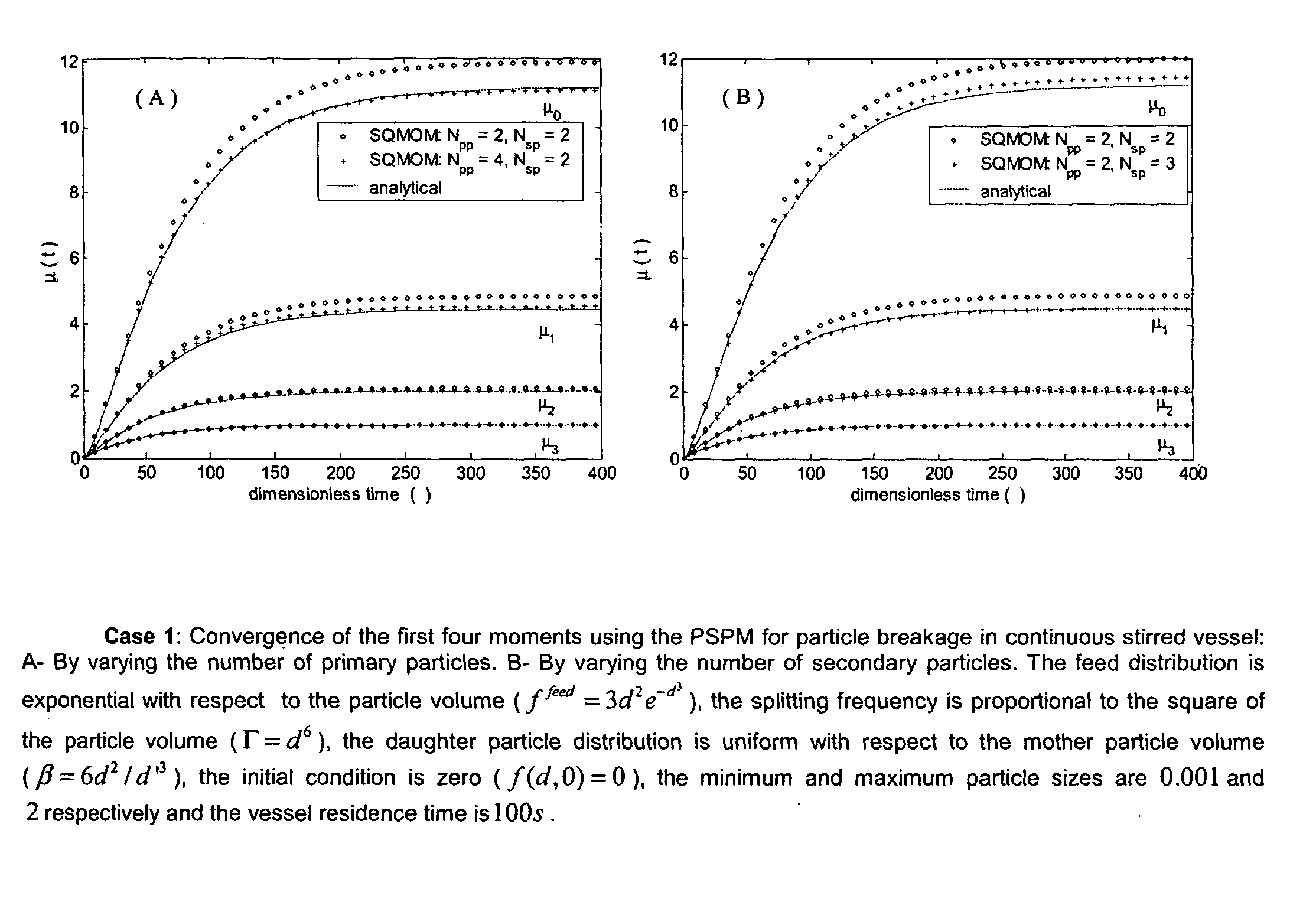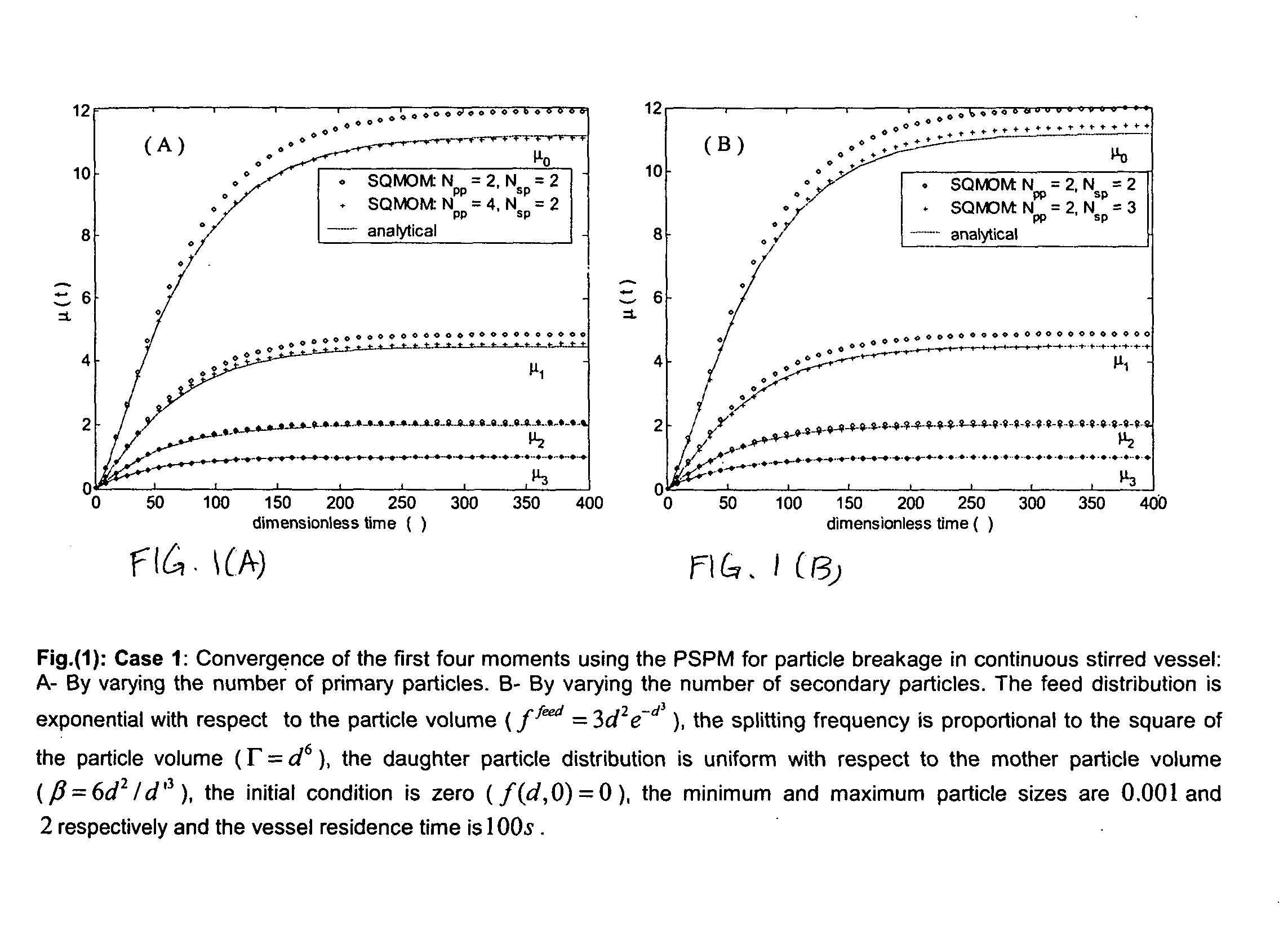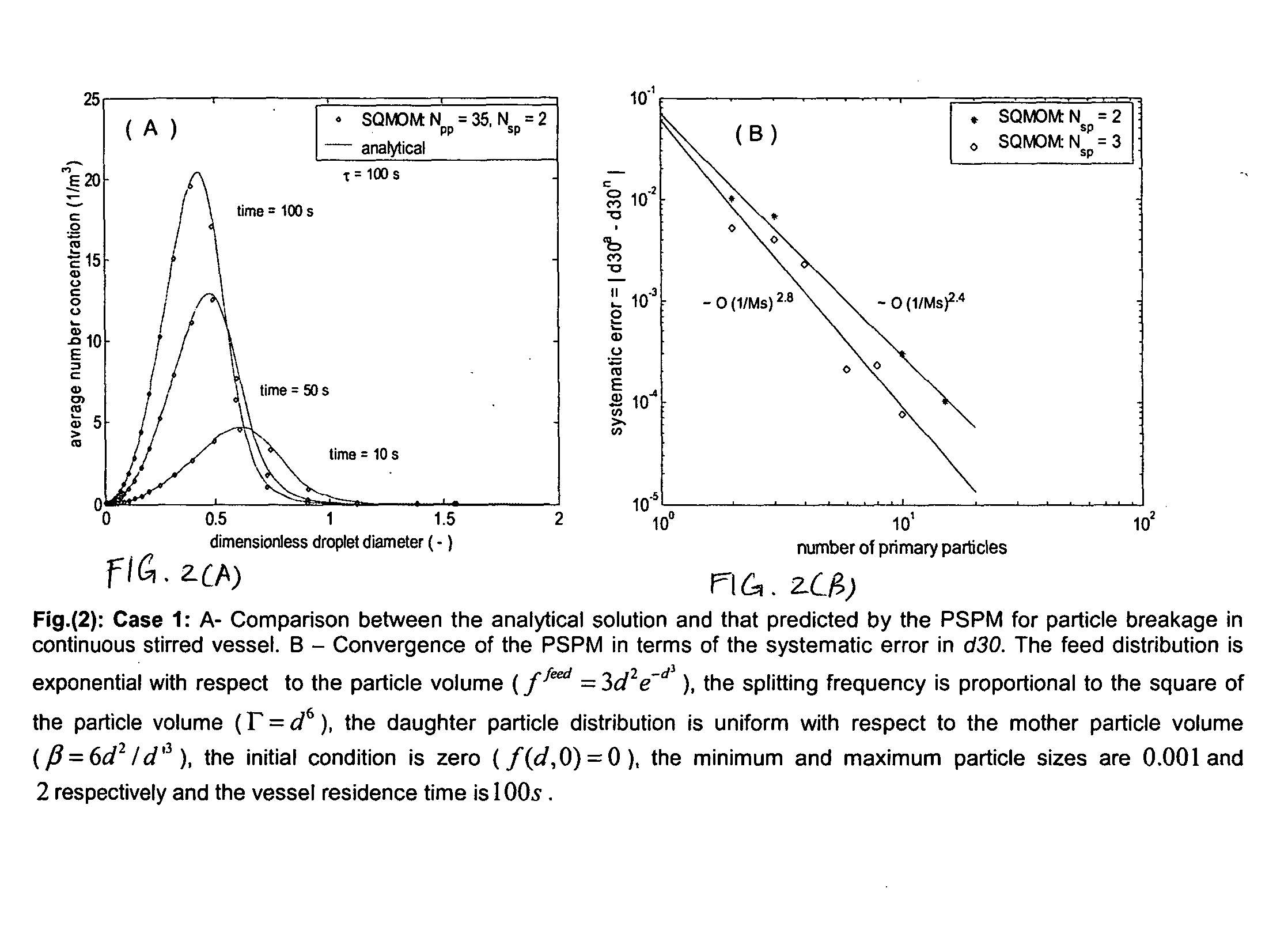System and method for simulating and modeling the distribution of discrete systems
a discrete system and distribution technology, applied in the field of mathematical modeling of population balance, can solve the problems of inability to accurately predict integral quantities of infinite difference schemes, inability to solve the associated eigenvalue problem, and loss of distribution and retention, etc., and achieve the effect of increasing the number of sections
- Summary
- Abstract
- Description
- Claims
- Application Information
AI Technical Summary
Benefits of technology
Problems solved by technology
Method used
Image
Examples
example 1
1. Example 1
Splitting in a Continuous Stirred Vessel with Simplified Splitting Functions
example 2
2. Example 2
Splitting in a Continuous Stirred Vessel with Realized Splitting Functions
example 3
3. Example 3
Aggregation in a Batch Vessel
[0077]
TABLE 1The PSPM and the other sectional methodsNo. ofPrimarySectional MethodparticlesNo. of Secondary particlesClassical sectionalMs1methodscarries some informationabout w but none about dFixed-pivot techniqueMs1carries some informationabout w & but none about dMoving pivotMs1techniquecarries some informationabout w & dConservativeMscarries some informationdiscretizationabout w but none about dQMOM1Nqcarries detailed informationabout w & dPSPMMsNqaccording to thecarries detailed informationpresent inventionabout w & d
[0078]The relationship between the PSPM and the other sectional methods is shown in Table 1. It is clear that all the sectional methods reported in this table are only special cases of the PSPM by varying either the number of primary or secondary particles. For example, the moving pivot technique of Kumar and Ramkrishna is recovered by setting the number of secondary particles to one and the number of primary particles to a...
PUM
 Login to View More
Login to View More Abstract
Description
Claims
Application Information
 Login to View More
Login to View More - R&D
- Intellectual Property
- Life Sciences
- Materials
- Tech Scout
- Unparalleled Data Quality
- Higher Quality Content
- 60% Fewer Hallucinations
Browse by: Latest US Patents, China's latest patents, Technical Efficacy Thesaurus, Application Domain, Technology Topic, Popular Technical Reports.
© 2025 PatSnap. All rights reserved.Legal|Privacy policy|Modern Slavery Act Transparency Statement|Sitemap|About US| Contact US: help@patsnap.com



